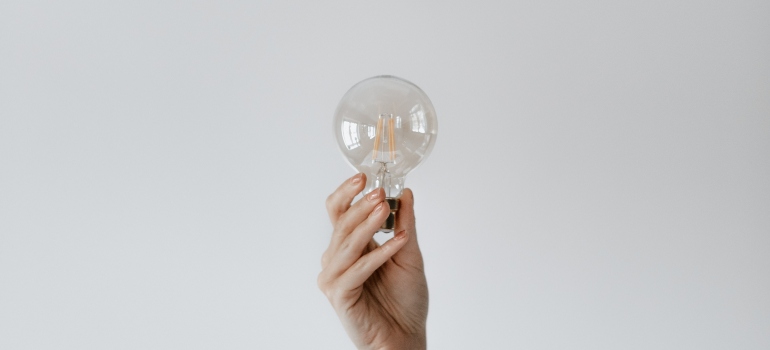Art Therapy
Unlock the power of art therapy rehabilitation as a complement to addiction treatment. Reach out to Harmony Ridge Recovery Center WV and explore the potential of this transformative approach.
There are many different forms of treatment that addiction treatment specialists will use to help treat your addiction. This is due to the complexity of addiction and all the factors that help cause addiction to occur. For example, one of the most common factors that often cause people to start abusing substances is poor mental health. Therefore, the best addiction treatment programs will offer forms of treatment that will also help improve your mental health. One form of treatment that benefits both the physical and mental health of its patients is art therapy rehabilitation. This is evident in the fact that many of the mental health and addiction treatment benefits of art therapy overlap.
To help you understand why you should attend an addiction treatment program with art therapy in it, we’re going to go over all of the mental health and addiction treatment benefits of art therapy. We’ll also go into detail about what exactly art therapy entails.

What is Art Therapy?
There are varying forms of art therapy. This is because “art” itself is a very broad term. Essentially, art is any form of expression that uses creativity. By this definition, any visual, auditory, or kinesthetic form of creativity is art. Therefore, any of these art forms that provide therapeutic benefits is art therapy.
Some examples of the different ways that you can use art as therapy include:
- Painting
- Sketching
- Knitting
- Sculpting
- Playing or listening to music
- Dancing
- Drawing
- Acting
- Poetry
- Collaging
- Scrapbooking
- Coloring
- Graphic journaling
Like all forms of therapy, art therapy is beneficial to your mental health. This is because it provides a distraction from the stresses of regular life. This, in turn, allows you to relieve any pent-up stress. In fact, most drug and alcohol treatment centers in West Virginia utilize art therapy to great success. However, stress relief is but one aspect of art therapy. To learn other ways that art therapy can improve your mental health, continue reading.
Benefits of Art Therapy
By improving your mental health, art therapy can also help treat addiction. This is evident in the fact that most people suffering from addiction started abusing drugs because they were struggling with mental illness. Therefore, mental illness is often something that you must address while in addiction treatment. That’s why we here at Harmony Ridge provide dual diagnosis treatment.
On top of that, many of the mental health benefits of art therapy overlap with the ways that it can benefit addiction treatment. To help you understand how art therapy benefits addiction treatment, we’ve described it below.
It Helps Your Brain Release Dopamine
One of the most important addiction treatment benefits of art therapy is its ability to make your brain release dopamine. This is beneficial for people in addiction treatment because chronic substance abuse changes your brain chemistry in a way that causes many of your neurotransmitters, such as dopamine, to no longer function properly.
As a result, the brains of many addicts become dependent on substances to release dopamine and feel pleasure. Therefore, art therapy’s ability to help your brain naturally release dopamine again is highly beneficial for those in addiction treatment.
It Helps Foster Self-Discovery
Another way that art therapy rehabilitation improves your mental health while also benefiting people in addiction treatment is by helping you learn more about yourself. This is because people that suffer from addiction often lose themselves in their drug habit. As a result, their perception of themselves is often skewed. Thus, getting the opportunity to experience some self-discovery through art therapy is beneficial for people in addiction treatment.
It Helps Foster Change
Art therapy can also help foster change in people in addiction treatment. This is because art therapy helps them open up and express their feelings. Once it does that, it also helps them self-reflect. The action of opening up combined with the action of self-reflection leads to those in addiction treatment being open to listening to suggestions about ways to change their lives for the better.
It Allows Self-Expression
Art therapy is quite beneficial to mental health because it provides an avenue for you to express your emotions and frustrations. Doing so is therapeutic because society often doesn’t give people the freedom to express their true emotions. What art therapy does is provide that freedom in a therapeutic setting. Furthermore, this therapy type complements other forms of therapy tremendously. For example, many patients who were enrolled in our cocaine rehab West Virginia program stated that art therapy is exactly what they needed to go through their difficulties. Having more options for self-expression is never a bad thing, after all.

Human emotions are layered and complex. As a result, many people repress their emotions. In fact, many people who participate in art therapy don’t even realize what they truly feel about certain situations until they express it through art. Even people who have never dreamed about creating art usually find the experience quite enjoyable. This is due to the fact that art is not just painting and creating music. Everyone has an artistic side to them; it is just a matter of finding the right outlet. All in all, art therapy is a great tool to use to dive into your mind and discover new things about yourself.
It Provides a Self-Esteem Boost
One of the other mental health benefits of art therapy rehabilitation is that it can boost your self-esteem. This is because completing a piece of art can give you a sense of accomplishment. This, in turn, gives you something to be proud of. On top of that, many people with mental health disorders, such as depression, struggle with low self-esteem. Many of the patients who visited fentanyl rehab centers, for example, showed a distinct lack of self-esteem before undergoing art therapy. Throughout the course of the therapy, these people have learned what self-accomplishment looks like and have grown as a result. Therefore, using art as a therapeutic tool to boost your self-esteem will only help treat any mental illness that you may have.
It Can Lead You to a Career
Another way that art therapy can boost your self-esteem is by giving you a new skill. Many people who participate in different forms of art therapy discover a form of art that they’re good at. Some of these people may find that they are so good at a form of art that they choose to take on a career path that utilizes that skill set. It is not uncommon for a person who went through West Virginia heroin rehab finds a new job as a prospective artist. There are many that have accomplished the same feat. By gaining a new skill and a career, these people’s lives are forever changed for the better.
It Helps You Feel Pleasure
As mentioned before, art therapy is particularly beneficial for people who struggle with mental illnesses such as depression because creating art is enjoyable. Therefore, creating art will release pleasure-feeling neurotransmitters in your body, such as dopamine. Finding a new source of pleasure is beneficial to most, especially to people who are undergoing Ambien rehab in one of the West Virginia treatment centers. Not everyone derives the same amount of pleasure from creating art, of course, but art therapy can be helpful to everyone.

You Can Use It As a Coping Mechanism
You can also use the practice of creating art as a healthy way to cope with life. Coping mechanisms are often necessary for people that suffer from mental illnesses such as anxiety. Many people who have undergone barbiturates rehab, for example, state that art allowed them to cope with all the challenges that were in front of them. For some, art therapy rehabilitation was the only thing that allowed them to make a full recovery.
It Helps Slow Your Mind Down
Another way that art therapy can help people suffering from anxiety is by slowing down the mind. This is because art therapy distracts anxious people with racing thoughts. Art therapy can also help slow down the thoughts in your mind by being a calming activity. Many people try to slow down their minds by abusing sedatives and end up in one of the benzodiazepine rehab centers. But if they had access to art therapy, they might not have gotten addicted to any dangerous substance.
It Can Help You Build Relationships
Another mental health benefit of art therapy that we would like to mention is the ability it can give you to bond with other people. This is especially true when art therapy is done in a group format. Even though art may seem highly individual, a group art therapy rehabilitation session can be a lot more productive than an individual one.
By giving you an activity to talk about and bond with other people over, you can improve your social skills and make friends. This too is beneficial for people with depression as they often seclude themselves from others. Also, having fun while socializing with others is another way to increase your dopamine levels. Furthermore, you will be in the company of peers who may be suffering from similar ailments (others who may attend the same opiate rehab center, for example), giving you a lot to talk about. Lastly, art therapy provides natural icebreakers, making starting conversations a lot easier than usual.

One major way that addiction treatment specialists use art therapy is visually. As we just mentioned, visual art therapy provides a way to spark communication among addiction treatment patients. There are three major techniques addiction treatment therapists use when visually communicating with patients through art therapy:
- Gestalt
- Active imagination
- Third-hand approach
Gestalt Methods
In the Gestalt method of visual communication, a therapist will use artwork as a tool to introduce a deep conversation. Through the Gestalt method, the therapist will ask the patient to describe the artwork from the artwork’s point of view. While this may seem awkward, it is undeniably effective. Furthermore, it is fun! Most patients that undergo one of the marijuana rehab West Virginia programs speak very highly of this method, in fact. They say that it was some of the best fun they had had in their lives. And that is how the best therapy should be, fun and therapeutic!
Active Imagination
Through the active imagination technique of visual communication, the therapist will use artwork as a tool to spark introspective discussion from the patient. This is done by having the patient talk about the thoughts that pop up in his or her mind after looking at the artwork. This method is particularly useful in stimulants rehab, as it may provide a way for a person to get their thoughts in order. But the important thing is that the active imagination technique provides a way for people to get talking when they would otherwise not want to do so.
Third-Hand Approach
In this form of art therapy, the therapist will assist the patient in creating artwork. By collaborating on artwork together, the therapist and the patient will hopefully bond and easily communicate with one another. This approach is amazing for people that require some sort of direction when creating art. It is also one of the approaches that almost every meth rehab center West Virginia uses in their addiction programs. It is an excellent way for the patient to get to know their therapist and vice versa.
Contact Us TodayArt therapy and other forms of treatment
Even though art therapy rehabilitation might be amazing in its own right, it is still a complementary form of therapy, which means it works best in combination with other forms of therapy. While some people might only need art therapy, the majority of people in the state of West Virginia still need “conventional” methods to go alongside their art therapy. At Harmony, we pride ourselves on providing all forms of treatment, including:
Anyone can reap the benefits of art therapy rehabilitation. Its benefits make it particularly beneficial for people that suffer from depression, anxiety, post-traumatic stress disorder (PTSD), eating disorders, and trauma, such as the loss of a loved one. But you can get the best results by combining art therapy with other treatment modalities.
Harmony Ridge Recovery Center is Here to Help You
If you live in West Virginia or Mid-Ohio, there is no need to search “art therapy near me” on your phone, as we provide the best alternative forms of addiction treatment and therapy right here at Harmony Ridge. In fact, all of our addiction treatment and holistic therapy practices are evidence-based.
Our therapy programs come in individual, group, and family formats. You can use whichever form of therapy best serves your needs. We also provide specialized detox and addiction treatment programs for a wide variety of substances. Contact Harmony Ridge Recovery Center today and we will provide you with a customized treatment program that is exactly what your mind and body require!
Frequently Asked Questions
Can I use my medical insurance to pay for treatment?
Absolutely. We work with all the major insurance providers, including Humana, Blue Cross, Tricare, Peia, and FMLA insurance. For a more detailed list, feel free to contact us directly.
What kind of art will be involved in art therapy?
The art you will be making entirely depends on your personal preferences and your interests. Art therapy may include a wide range of activities, processes, and materials. However, the focus of art therapy is usually on the process itself rather than a finished art product.
Do I get to keep my art?
Of course. Anything that you make is yours to keep forever. That being said, if you would rather have us hold on to your art pieces, there’s that option as well.
How will my art be interpreted?
Unless the interpretation of your art is important to the therapeutic process, your therapist will not interpret anything you make. Art therapy is more about the personal meaning the art has for you and less about any arbitrary interpretations.
Jump To Section
Begin Your Journey to Healing Here
Ask me about recovery, I can help you!
Our recovery specialists are standing by 24/7 to help you or your loved one.
Or call us: 



